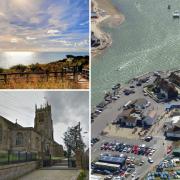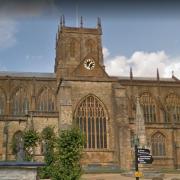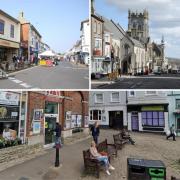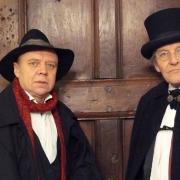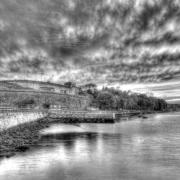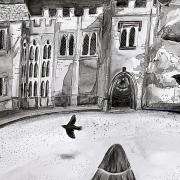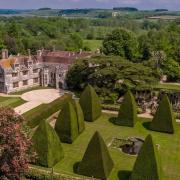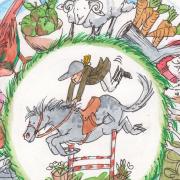Prepare to experience the paranormal as Visit Dorset reveals some of the county’s most haunted pubs, stately homes, historic buildings and tanks
Ye Olde George Inn, a 14th century coaching inn in Castle Street, Christchurch, boasts an eventful past including a fateful love story. Margaret Moore, the daughter of the inn’s landlord, fell in love with a Royalist soldier and became pregnant much to the disgust of her staunch Parliamentary supporter father. Unwilling to taint the family name, he bricked up his daughter and grandson in the cheese pantry leaving them to starve to death. It is said that in the dead of night you can hear a newborn baby crying and Margaret scratching at the bricks.
The Crown Hotel in the Old Town area of Poole is host to several spooky goings on, such as lights turning on and off, the ghostly sound of a piano being played and two children crying and yelling. The building in Market Street is said to have been home to two children who were locked up by a parent who left them to die. They now haunt the premises with their eerie cries.
Spirits linger at the atmospheric ruins of Knowlton Church near Cranborne. The 12th century ruins are at the centre of a Neolithic ritual henge earthwork (similar to Stonehenge). Sightings include a phantom horse and rider, a weeping nun, a ghostly face peering through a window in the tower and a tall cloaked figure.
Shaftesbury Abbey is believed to be haunted by a monk who was the sole guardian of the location of the Abbey’s hidden treasure. Unfortunately he died without passing on the information and now haunts the grounds to ensure the treasure remains hidden. Other sightings at this Saxon abbey include a phantom man running around the ruins at night, which is said to be the ghost of King Edward the Martyr.
Athelhampton House near Dorchester is one of the ten most haunted houses in England. There have been no less than 11 different ghostly presences recorded in this 15th century manor house, including Nicholas Martyn’s trapped ape. Both the current residents of the house – the Cooke family - and visitors have heard scratching sounds coming from behind the wooden panels that line the library walls. A ghost named ‘Cooper’ occupies the wine cellar, and in the past a pair of dualists have been known to put on a show in the Great Hall.
It is said that Bovington Tank Museum’s Tiger Tank is haunted by a former German commander. Nicknamed “Herman the German” there have been several sightings of a German commander peering into the tank, as well as moving objects and museum staff experiencing a strange feeling of being watched.
Another military museum with a resident ghost is the Royal Signals Museum at Blandford Forum. Small objects have been mysteriously moved, phantom footsteps heard and sudden cold spots are sensed. It is thought that this supernatural presence is ‘Mary’ a young, local woman who was due to marry a US serviceman during World War Two, but was murdered before she could say “I do”.
Bettiscombe Manor in West Dorset is home to a screaming servant’s skull. The servant’s dying wish was to be buried at the manor but against his wishes he was buried in the nearby village cemetery. Ill fortune plagued the village and manor until the body was moved back to the manor house. It is still the belief today that if the skull is removed from the manor house its screams will fill the grounds and whomever commit this desecration will die within the year.
Nothe Fort’s extensive underground passageways are said to be home to a “Whistling Gunner” amongst other presences. The historic 19th century sea fort in Weymouth was voted one of the spookiest places in Britain and even employees refuse to wander around the grounds alone after dark. Eerie whistling, steam train horns and air raid sirens have all been heard, as well as sighting of spirits walking up and down the terraces.
This article was updated by Martha Griffiths in June 2021.





